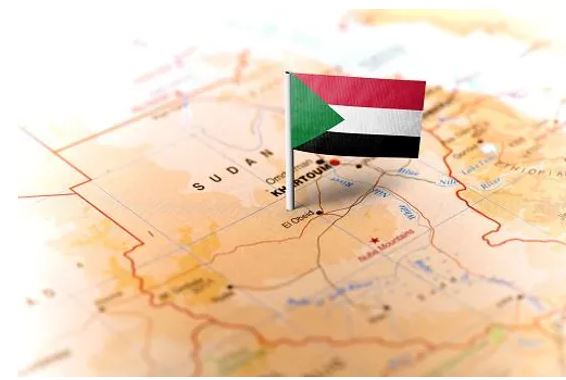Current Affairs
The Labakh Tree: History And Benefits
15 September, 2019
Labakh street in Atabra city, north eastern Sudan (credit: Sudaneseonline)
By: Rogia al-Shafee
KHARTOUM (Sudanow) - A heavy storm last week brought down an aging gigantic labakh tree on the Nile Avenue, facing the State House (The Republican Palace). The labakh is a species of the ficus religiosa family of shade trees.
The incident had coincided with the discussions then underway to form the new government. This occurrence has reminded social media interlocutors of a number of myths and information associated with the falling of trees.
Dream interpreters associate the falling of trees with something ominous that could happen.
In the Sudanese culture there is an assertion that: “When an old sycamore tree falls, the Barclays people’s magic is undone”, a reference to the end of British rule. And in the Darfur culture they say: “When a labakh tree hits the ground, Sudan should expect something good to happen.”
All in all, the fall of the labakh tree seems to have brought good news with it for the people of Sudan: The formation of the government of national unity which is hoped to unify the divided nation.

This has also coincided with the positive signals the rebel groups in the South and West of the country have been sending.
The labakh is a rare long- living tree; though reports say it is now an endangered species.
The labakh tree flourishes along river banks and on the edges of valleys. It can grow up 40 meters tall and 6 meters wide.
The history book says the labakh tree was brought by the Turks when they invaded Sudan at the turn of the 19th Century.
In 1898 and at the outset of the British rule, Lord Kitchener (who led the invading British army) planted lots of labakh trees in and around the State House, most of which still exist. Reports said Kitchener was helped in this by agronomists from Italy and France. This labakh garden had reached its boom during the tenure of the British Governor General of Sudan, Lord Francis Reginald Wingate Pasha (1900-1916).
Many foreign books about Sudan had paused at the beauty of this huge shady tree. In his two famous books “The Blue Nile” and “The White Nile” Alan McCrae Moorehead had described the picturesque view of the River Nile in the captivating embrace of rows of huge labakh trees on its banks.
Labakh trees had remained an outstanding landmark along the Nile embankment, with their heavy shades that moderate the grilling hot summer temperature in Khartoum.
These trees have also been witness to many of the historical events of Sudan, given their proximity to the State House, where decisions are made. And they still continue to witness the important political developments of the country.
These ancient trees continue to receive due government attention, because of their aesthetic value and because of their nearness to many of the important government institutions. On national festivities their trunks are dyed with colorful paints.
The labakh tree, with its wide shade, is a conference hall in its own right in many parts of Sudan. It houses tribal meetings and tribal courts. It is frequented for recreation and pastimes. In many of Sudan’s towns and villages the labakh trees shades are marketplaces where traders display their goods for buyers.
labakh trees have been grown in many of Sudan’s towns to give shade and to enhance the town’s landscape. Beside Khartoum, other touching rows of labakh trees can be seen on the Blue Nile embankment in the City of Wad Medani (about 200 km South of Khartoum).
According to medicinal herbs expert Dr. Ehsan Mohamed al-Hadi the labakh tree helps fix nitrogen in the soil. The bark is locally used to stop gastric problems particularly piles and inflammatory disorders. The bark is also used in allergic conditions such as asthma and hay fever. The seeds oil is used to cure leprosy and vitiligo.
Because of its high content of tannin, the labakh bark is used in the tanning of hides.
The labakh is a hospitable tree: It allows another tree to grow beside it at a close distance, no problem. That is due to its hamstring root system.
E N D
YH/AS
Post your comments
Photo of the Week
Everybody alive today came from one African country (The Independent) Ariana Baio Khartoum, Jan.1 (Sudanow)-It is well known that all humans alive today can be traced back to a common ancestor but a study may have found where that ancestor originates. Researchers at the University of Oxford’s Big Data Institute mapped the entirety of genetic relationships among humans t...
MoreNew media
The Poll
Archives
-
01 January, 2023
Phone battery killed nine persons, injured twelve
Zalingei, Jan.1 (Sudanow) - A dispute over a phone battery, in Marin Market, Central Darfur, led to the killing of nine persons and injuring of another twelve. The Director of Central Darfur Police, Salah Omar Al-Tayeb told SUNA last Thursday that main reasons behind the events in Zalingei began with a dispute over a phone battery, where one of the citizens stabbed to death. The police official added that the police forces moved to th...
Sudanow is the longest serving English speaking magazine in the Sudan. It is chartarized by its high quality professional journalism, focusing on political, social, economic, cultural and sport developments in the Sudan. Sudanow provides in depth analysis of these developments by academia, highly ...
MoreRecent tweets
Tweets by Suda_nowFOLLOW Us On Facebook
Contact Us

Address: Sudan News Agency (SUNA) Building, Jamhoria Street, Khartoum - Sudan
Mobile:+249 909220011 / +249 912307547







